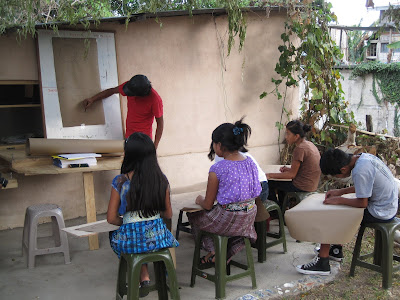Part two is a more positive list, particularly featuring things we realize we take for granted. And while this is certainly a good and healthy perspective to have learned, we can't wait to enjoy the following.
Note: we started writing this before we made it back to the states, so sometimes it's written as if we're still in Guatemala, which we're not. But we were too lazy to change the verb tenses, etc.
Things We Are Looking Forward To:
-Refridgeration and foodstuffs that require it.
The first night we got back to the U.S., Stacy's Uncle Tom and Aunt Stella had brie and manchego waiting for us. It was the f'ing jam.
Agreed. This was the best. And will continue being awesome... hope the excitement doesn't wear off too fast...
-NPR (if Congress doesn't kill it).
Sometimes I want to listen to something besides music, and our internet in San Pedro was too slow to stream NPR via the web. Plus, now that I have to pay for the NYT website, All Things Considered is even more important. I have no idea what I'll do if I can't get my liberal bias for free.
-Live music.
Yeah, we saw one Dr. Sativo concert in San Pedro. It was alright. I want to want to pay money to see a concert.
I would like to actually see people playing instruments and loving it. Dr. Sativo has a lot of Guatemalan pride, which was cool to see... but one in seven months? We are obviously having withdrawals.
-Price tags.
I've really come to appreciate the standardization of pricing in the US. Not that most product prices are fair or sensical, but having a clearly printed label on a product keeps the store owners from ripping you off. Without a pricing structure every stall owner, every store owner and every transit driver can and will charge you whatever they damn well please (and it will vary depending on your clothing and/or their mood).
-Riding bikes in a setting more friendly to my styles of riding (and having four bikes).
Well-marked trail networks are awesome for mountain biking. Also, although some might find this a bit perverse, I miss riding the Fuji Finest in traffic. I understand that having multiple bikes might be a bit ridiculous (in fairness though, I try not to spend too much of my money on anything else), but it's really nice to be able to say, "hey, today I think I'm going to go for a long road ride, on a bike built to do that."
-Outdoor recreactional infrastructure (with no fear of machetes).
To reiterate, well-marked trail networks are awesome for mountain biking. But this holds true for hiking, too. I wanted to explore trails all the time, and if we had been living in a similar landscape in the US, we would have gone hiking at least once per week. But, Guatemala's not the safest place for a hiker, and there are no trail maps. Without a guide, there's always a slight chance that you might get lost and end up on an angry farmer's land, or run across a guy with a machete. If you're careful, it's not bad, but coming to terms with those possibilities warrants a bit more trepidation and requires a bit more motivation than hiking in the US.
-Potable water.
It is likely that because we've been here so long, our bodies could have adjusted to drinking the tap water. We have friends that have no problem cooking with it and so on. But I just can't do it. And maybe it's because our sink always smells so bad... Either way, I can't wait to brush my teeth or fill a glass from the tap.
-Having a choice of different shoes to wear.
I walk 25-30 minutes into town on a dirt (and the past 4 months REALLY dusty) road at least once, usually twice a day. I wear Teva flip flops every single day because it is usually hot and they are the best for yoga. I'm thankful to have shoes here. And I'll be even more grateful to see all the beauties I left in my closet when I return home!
























































